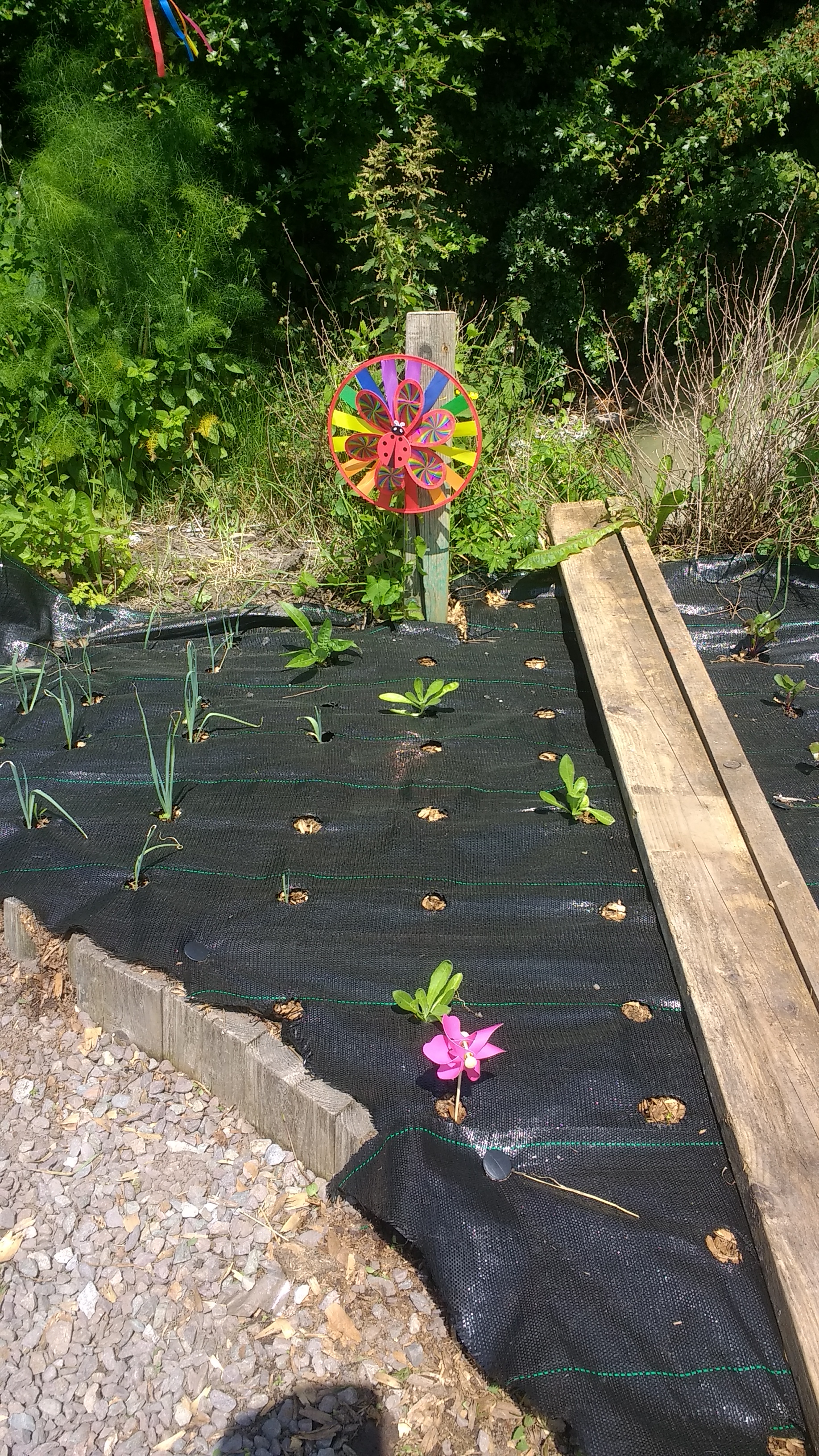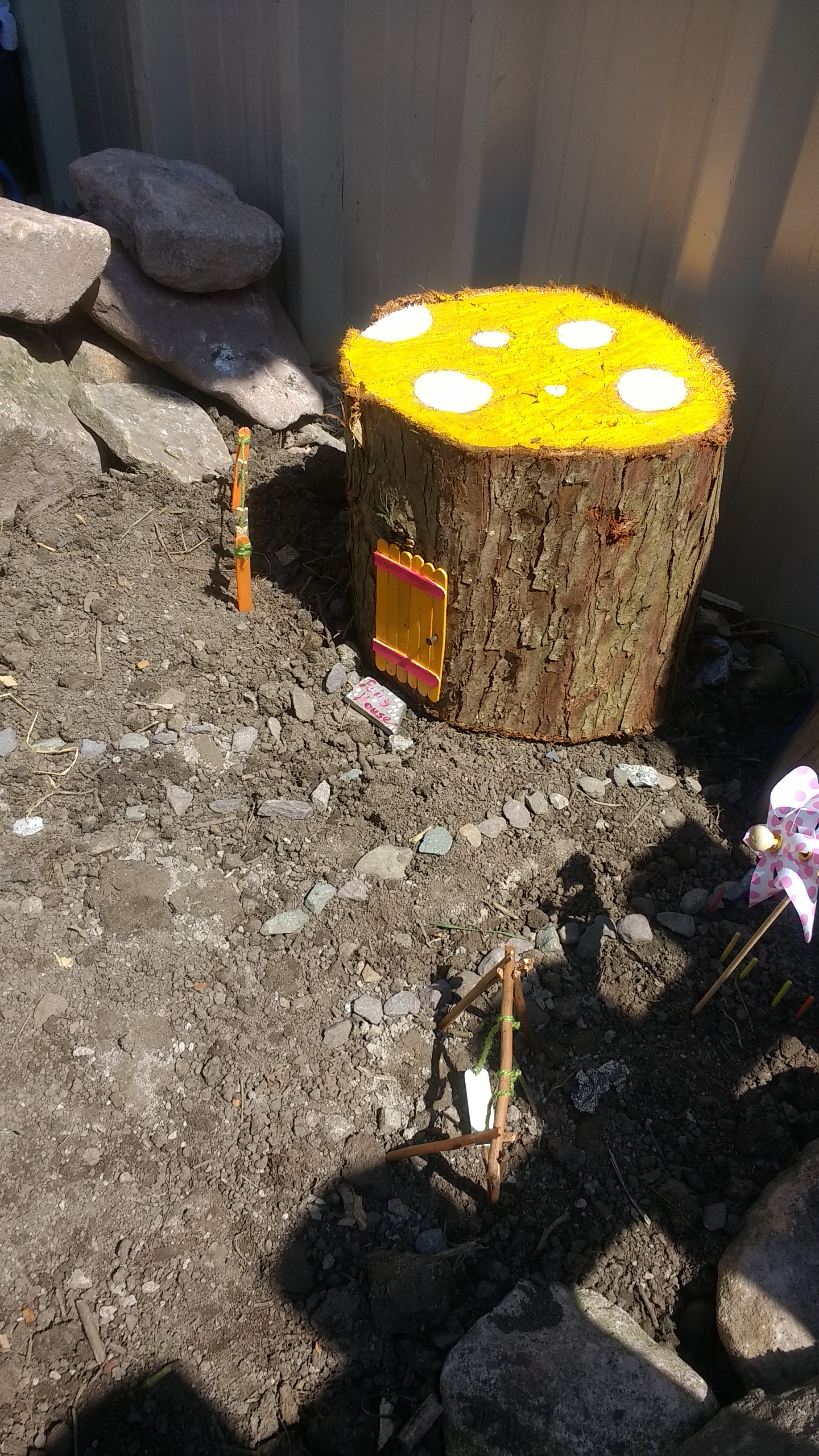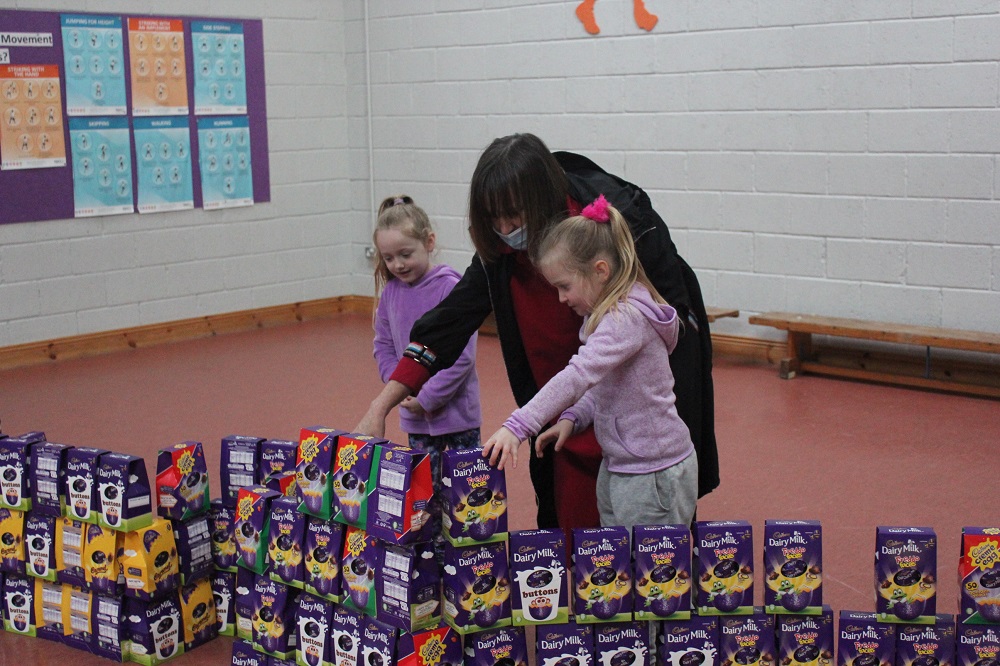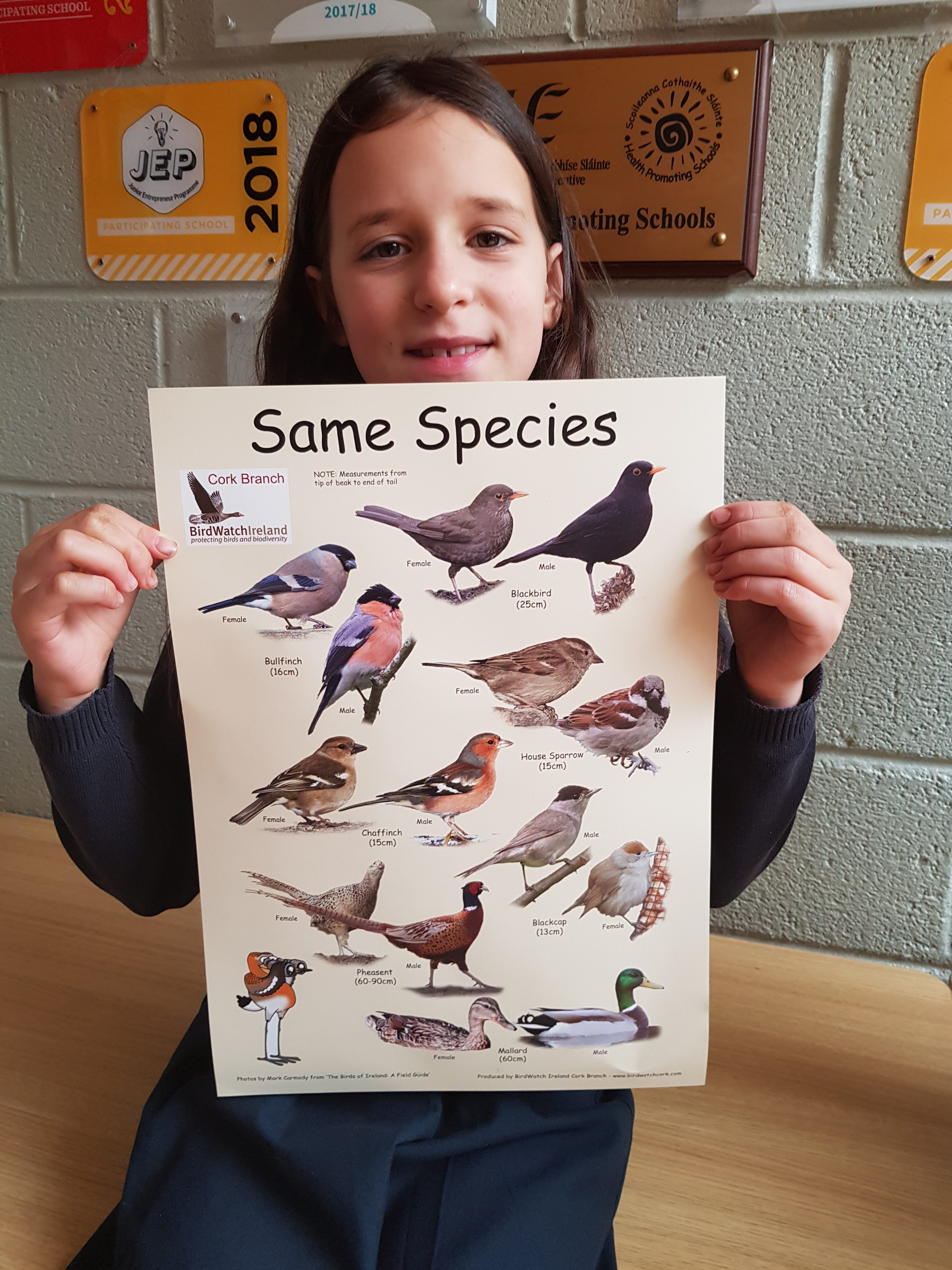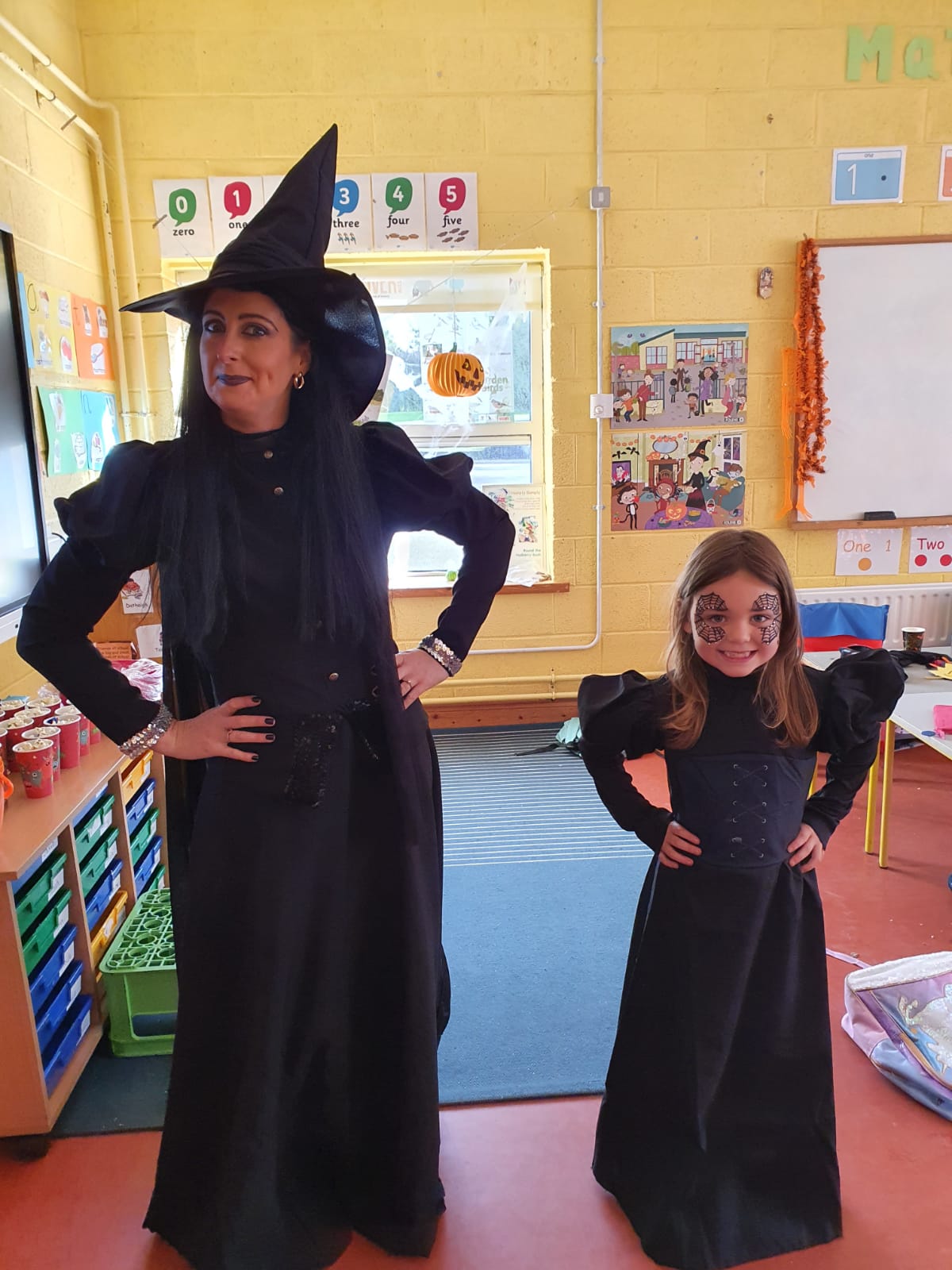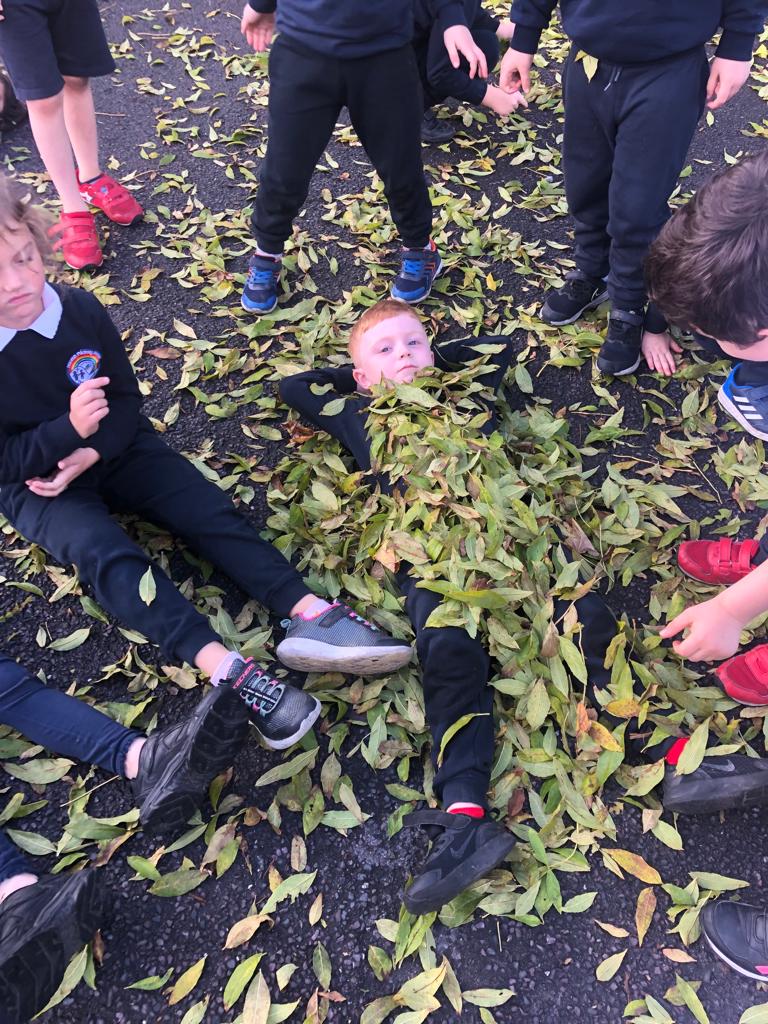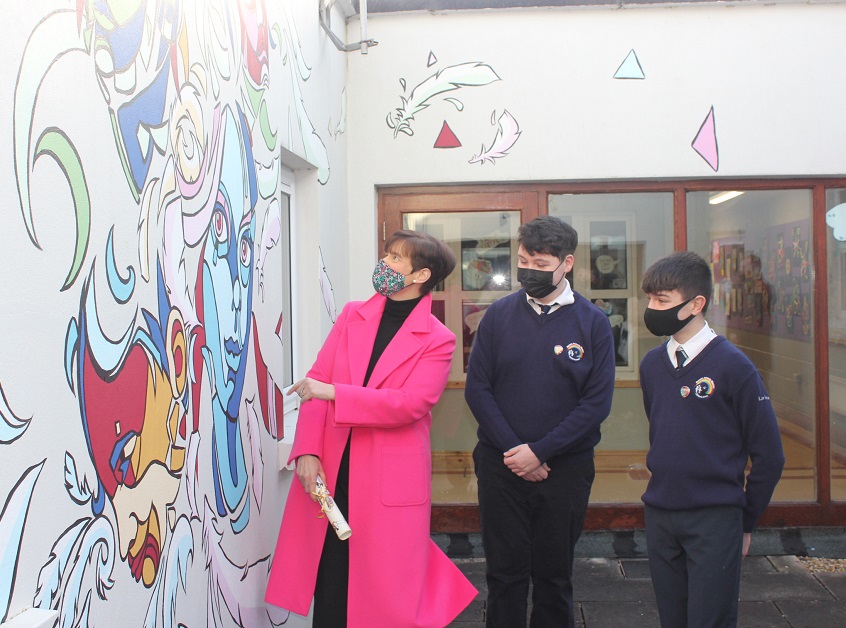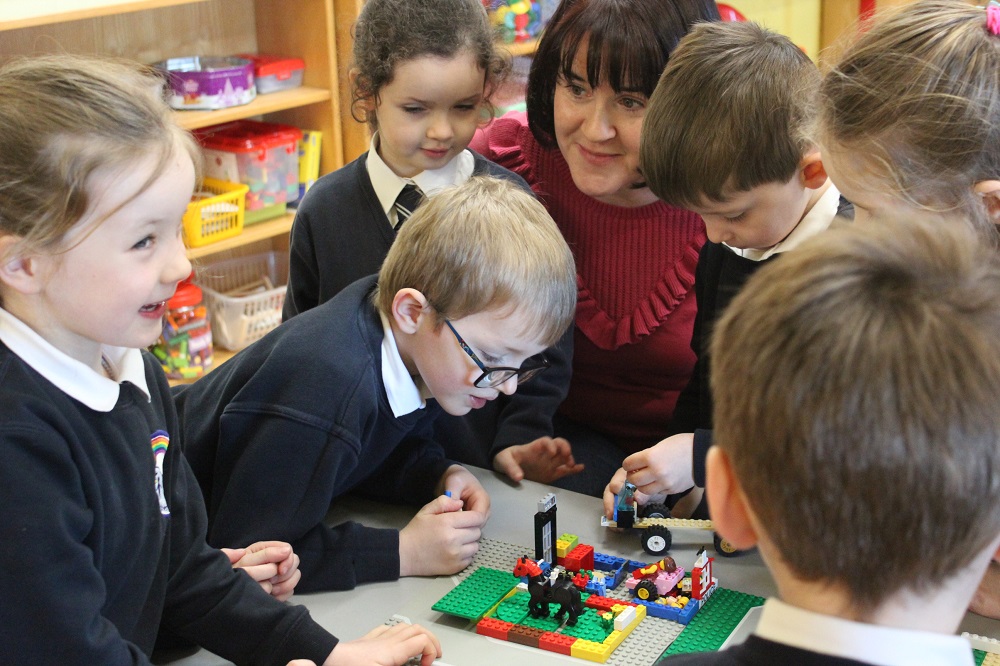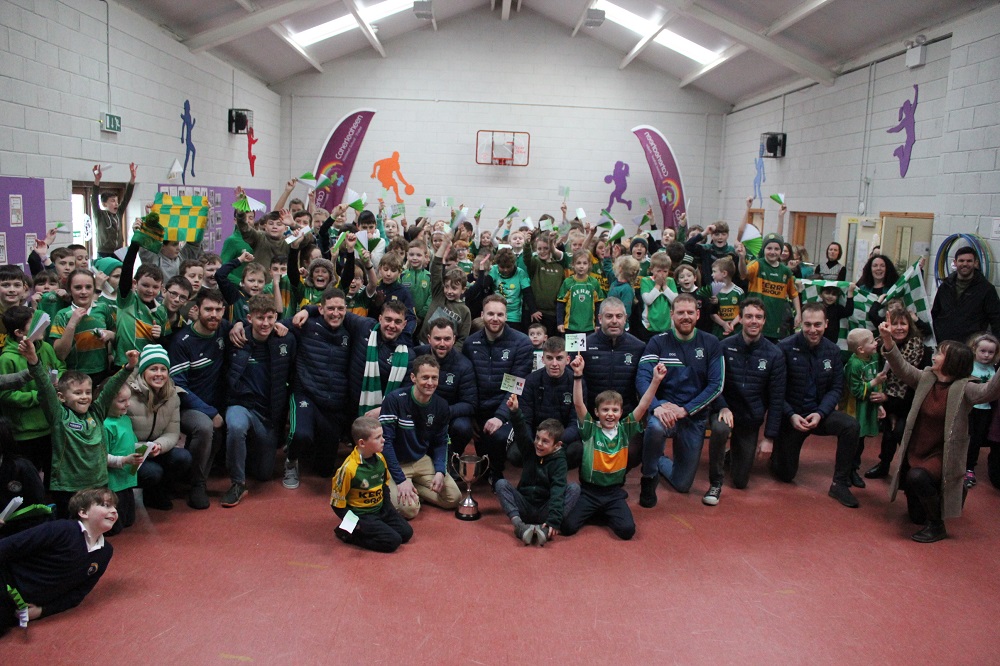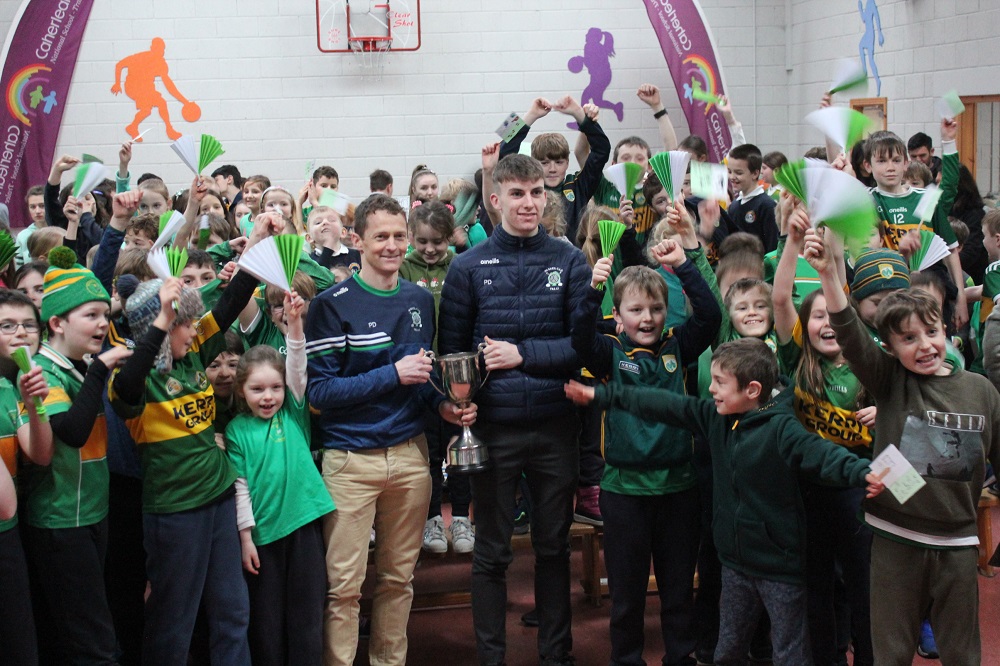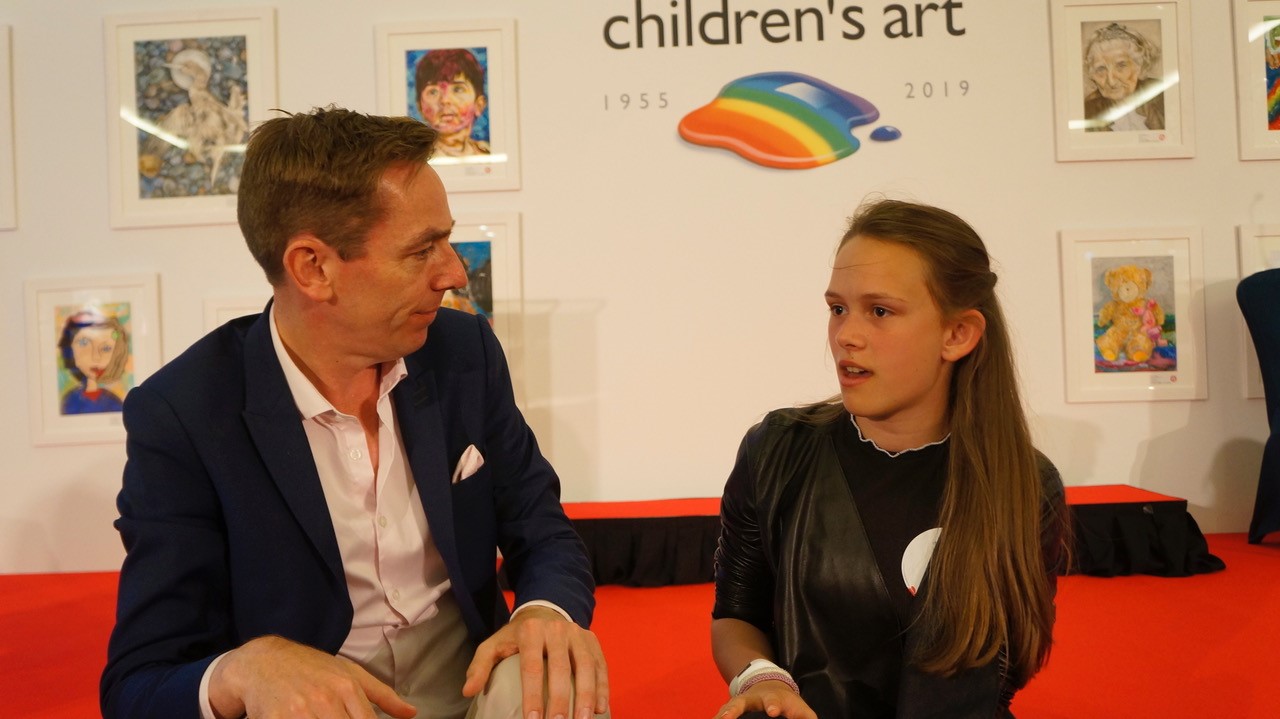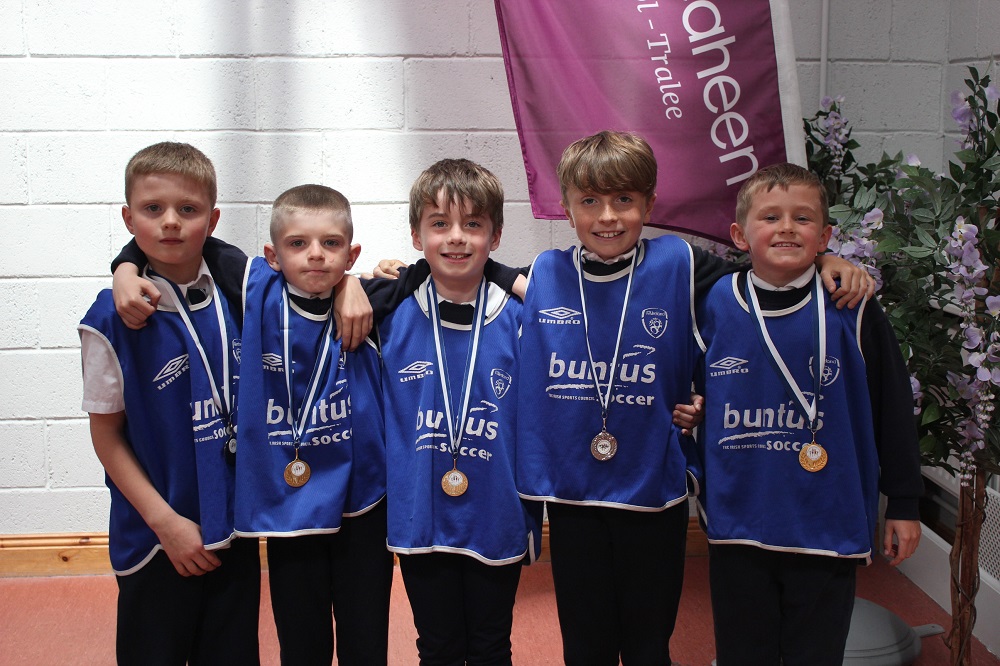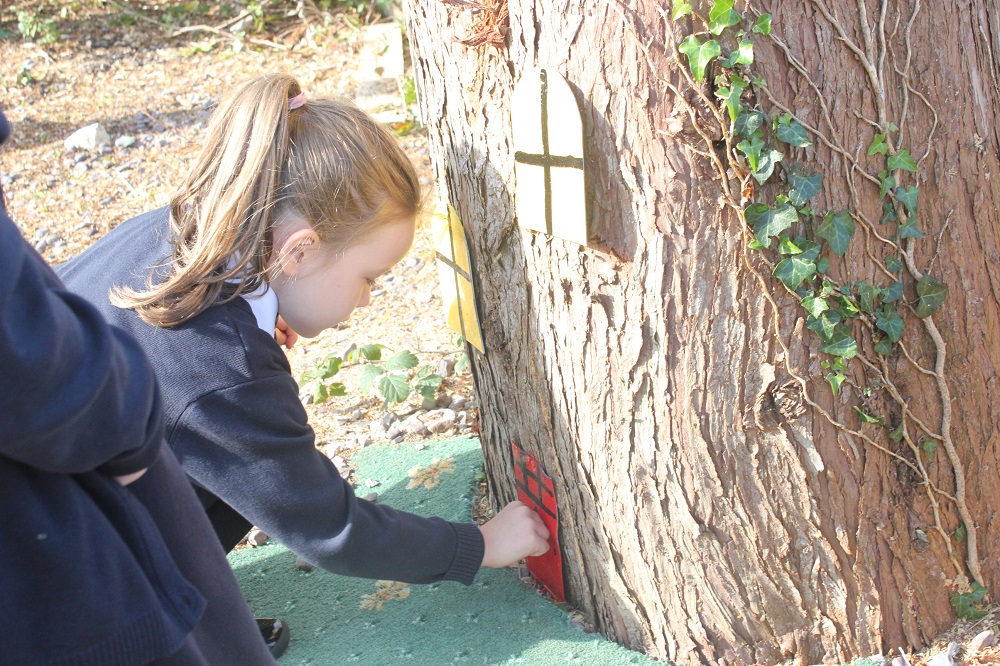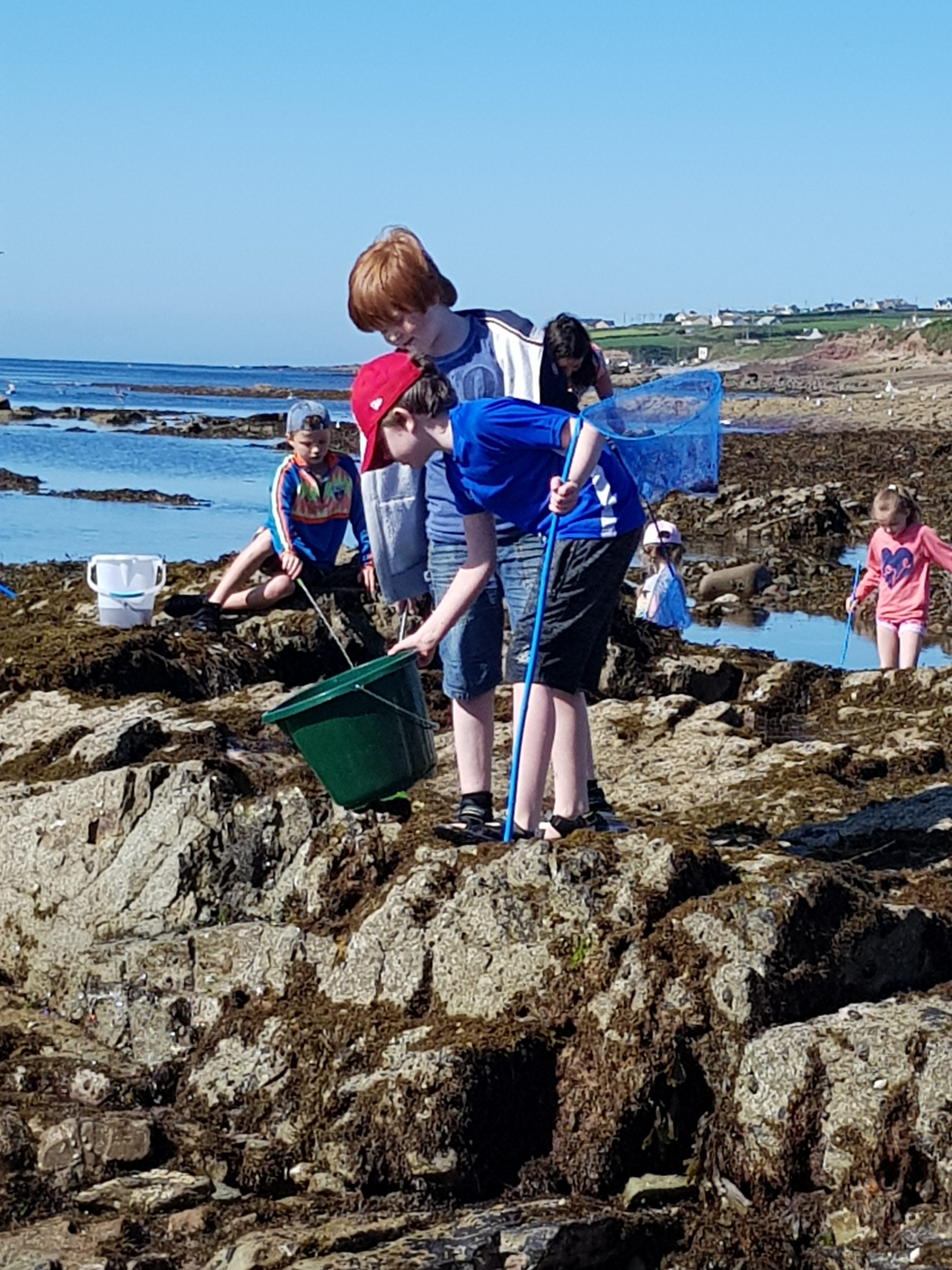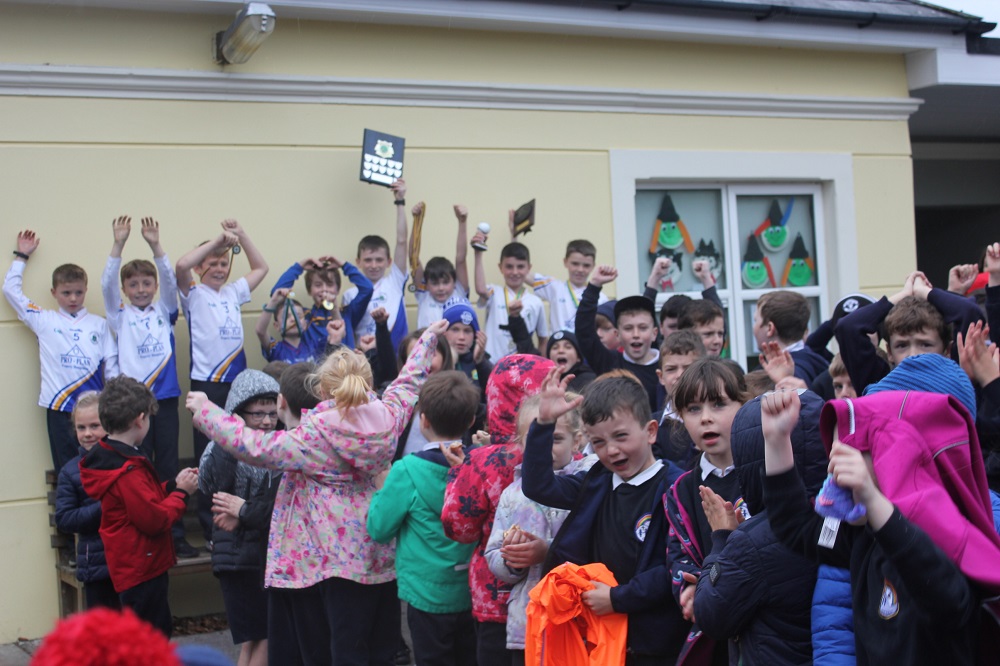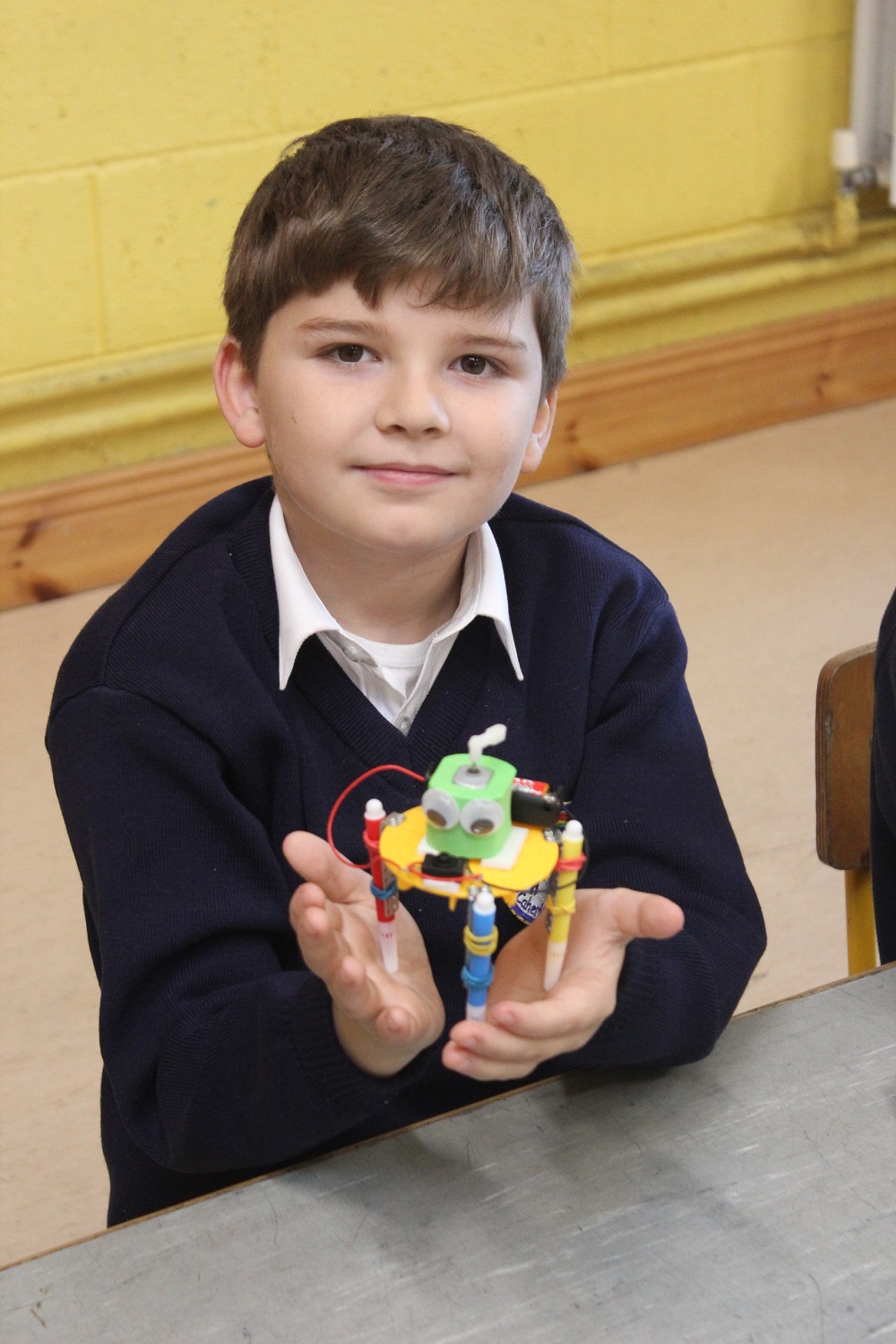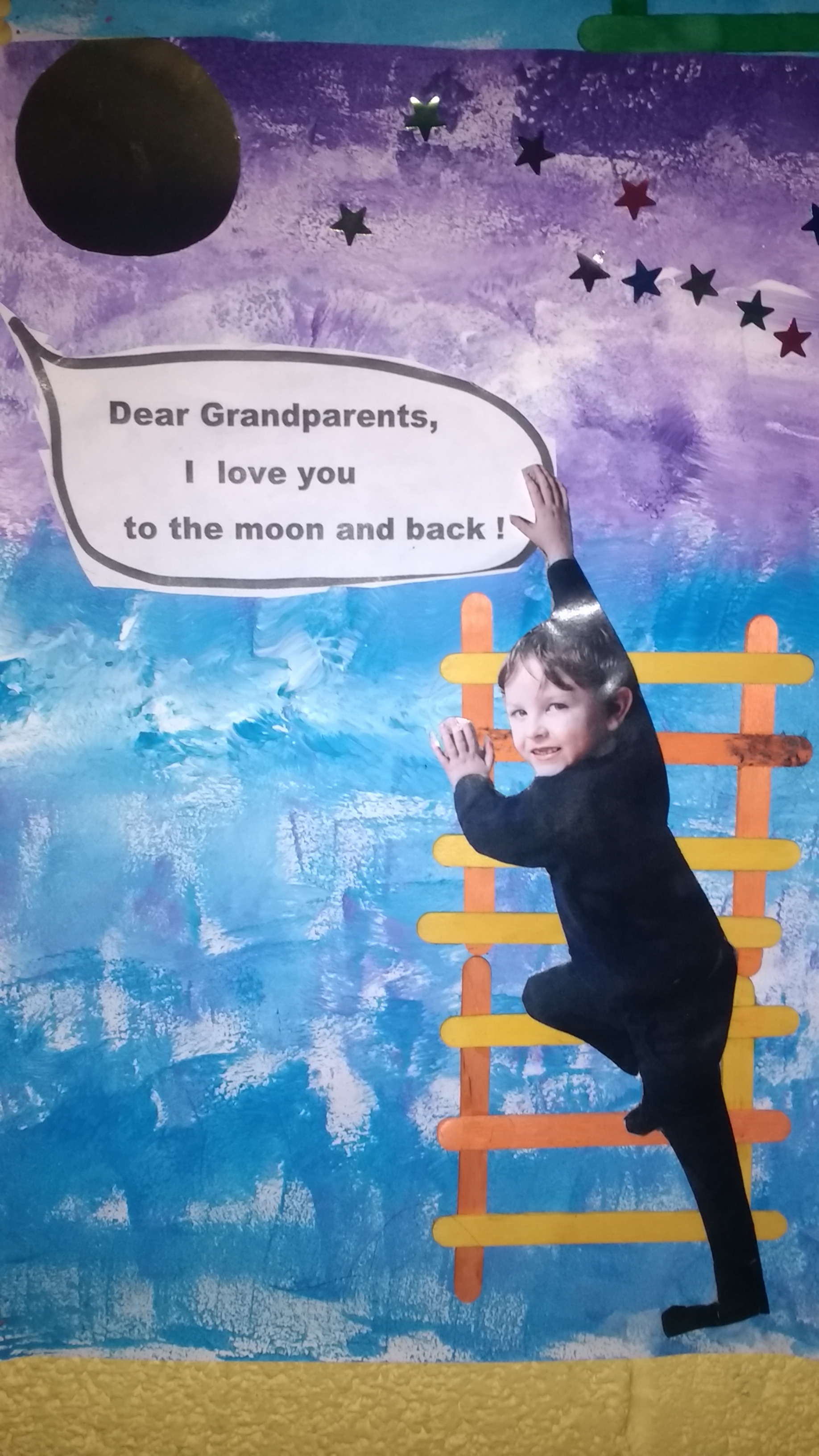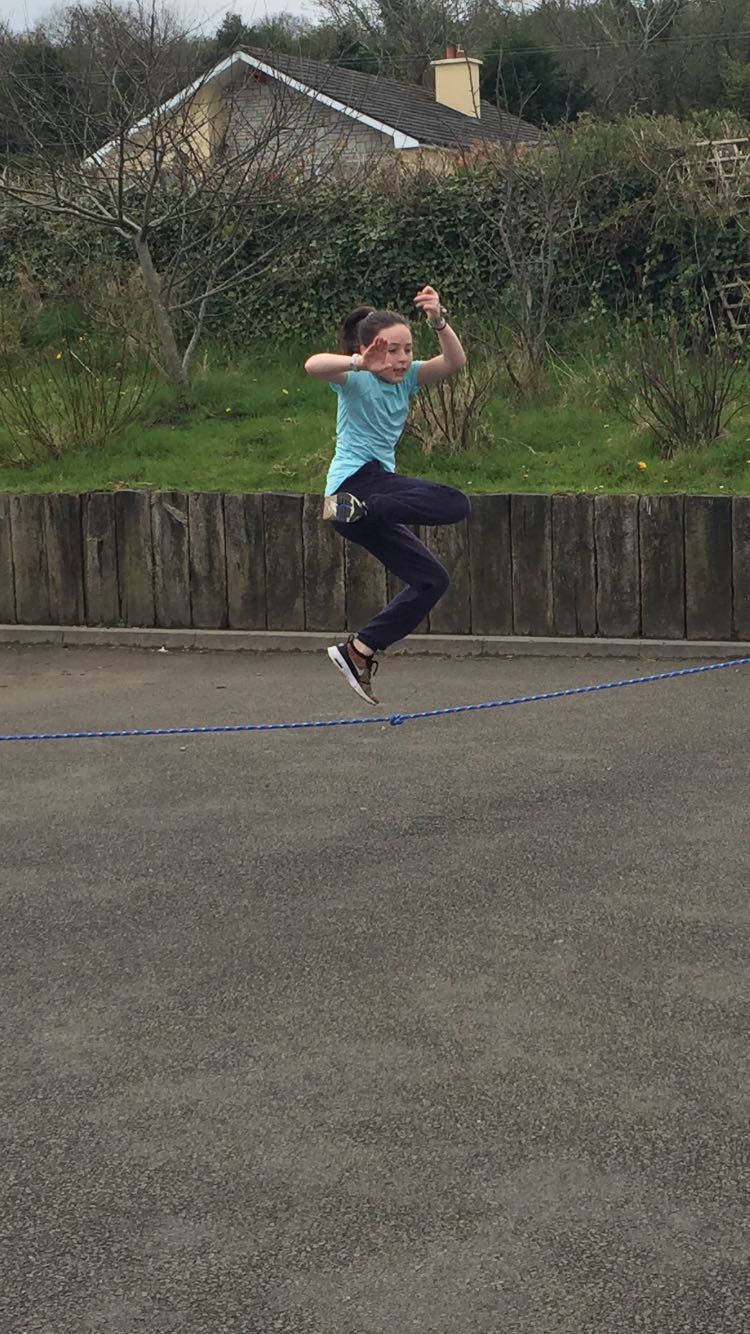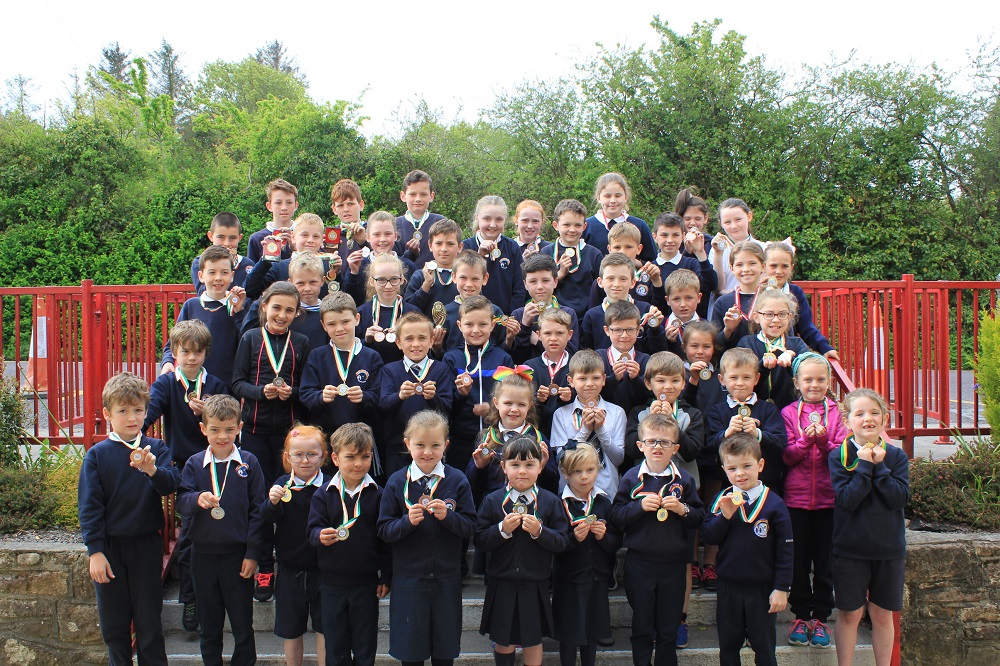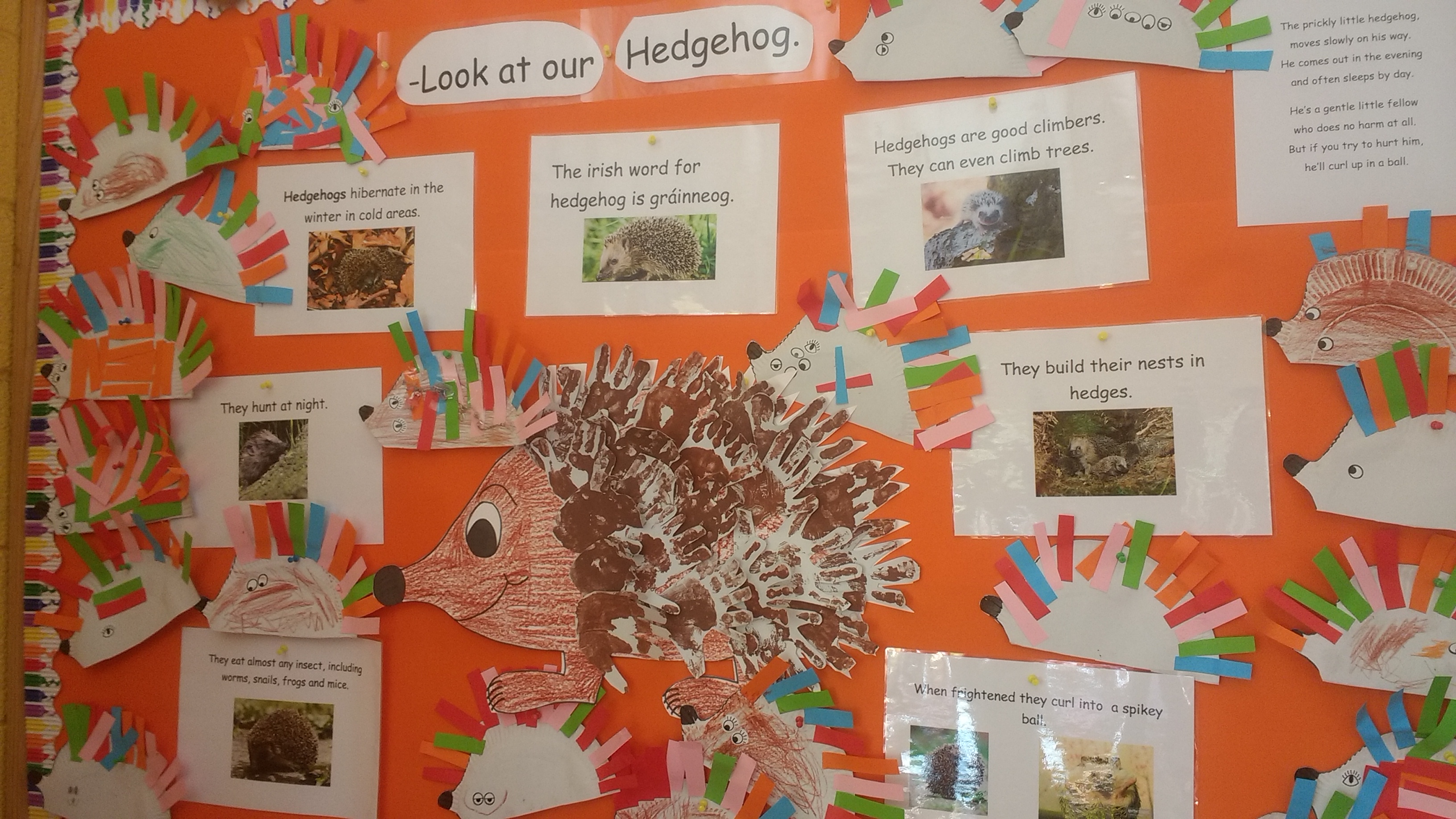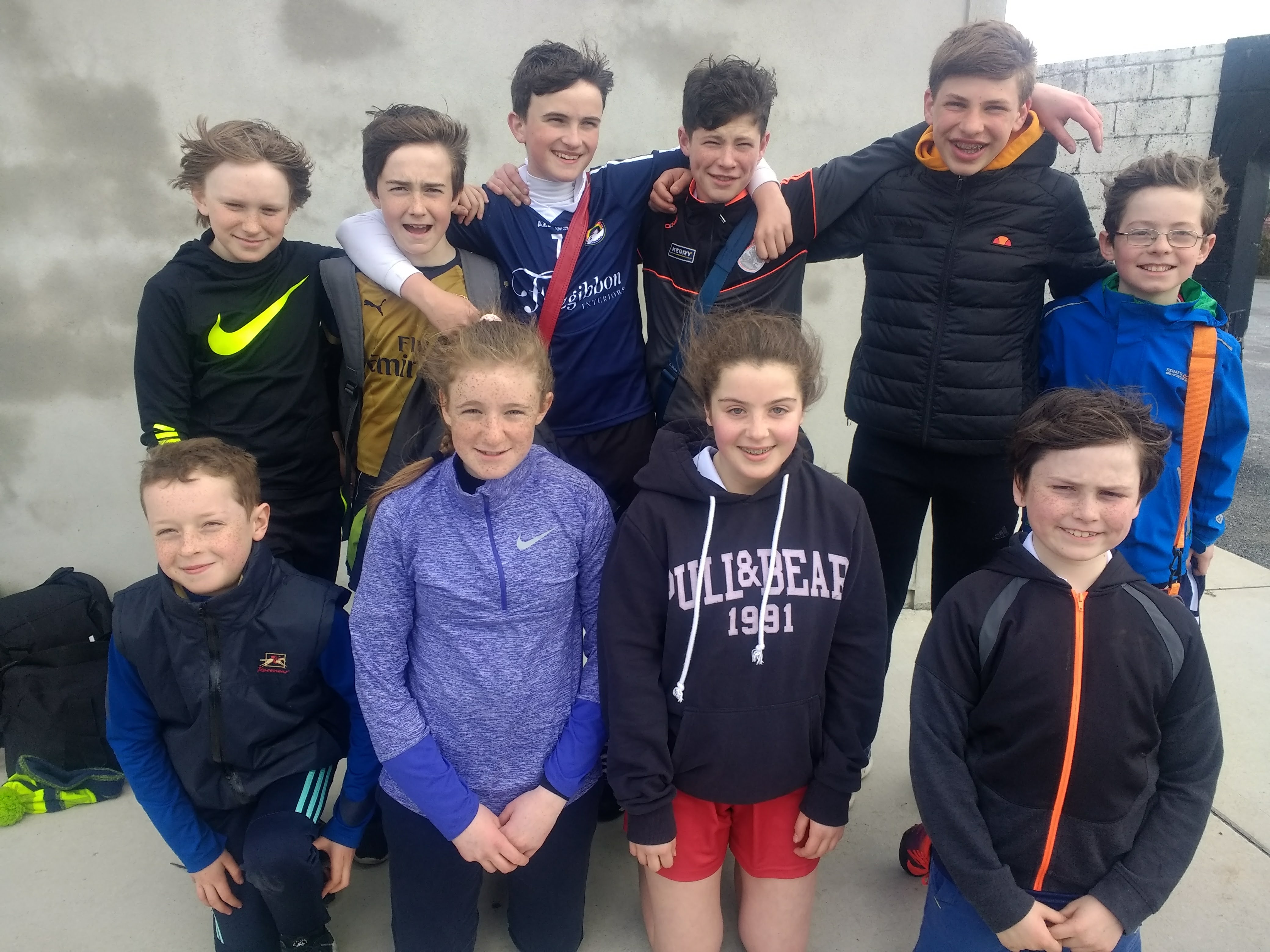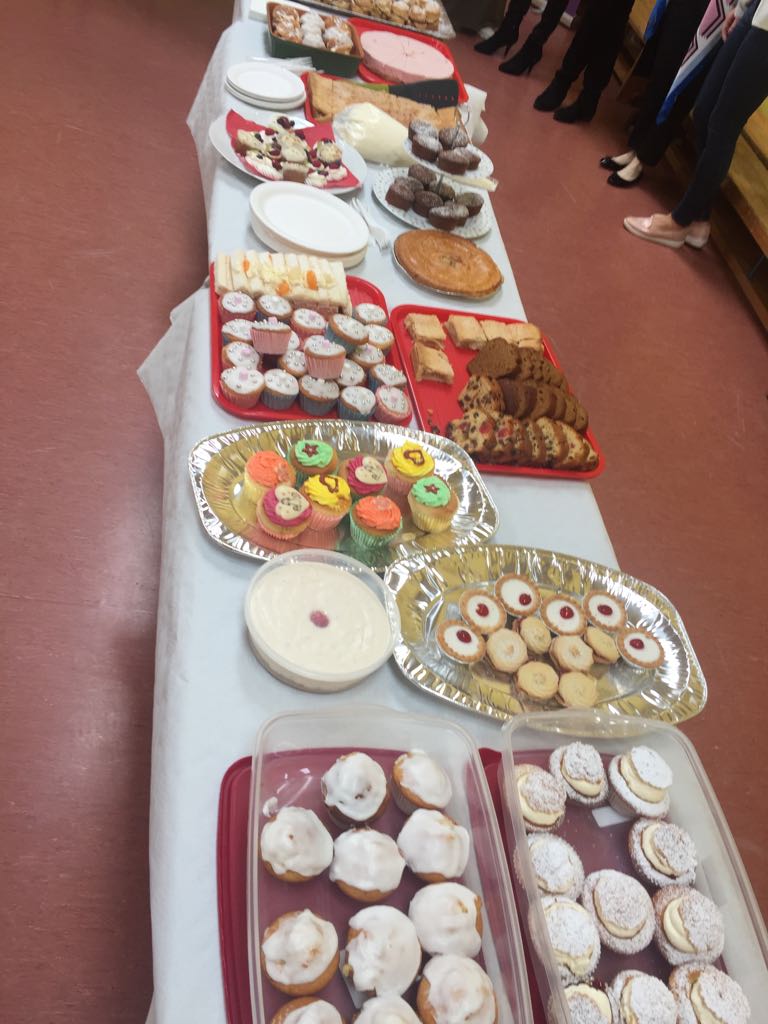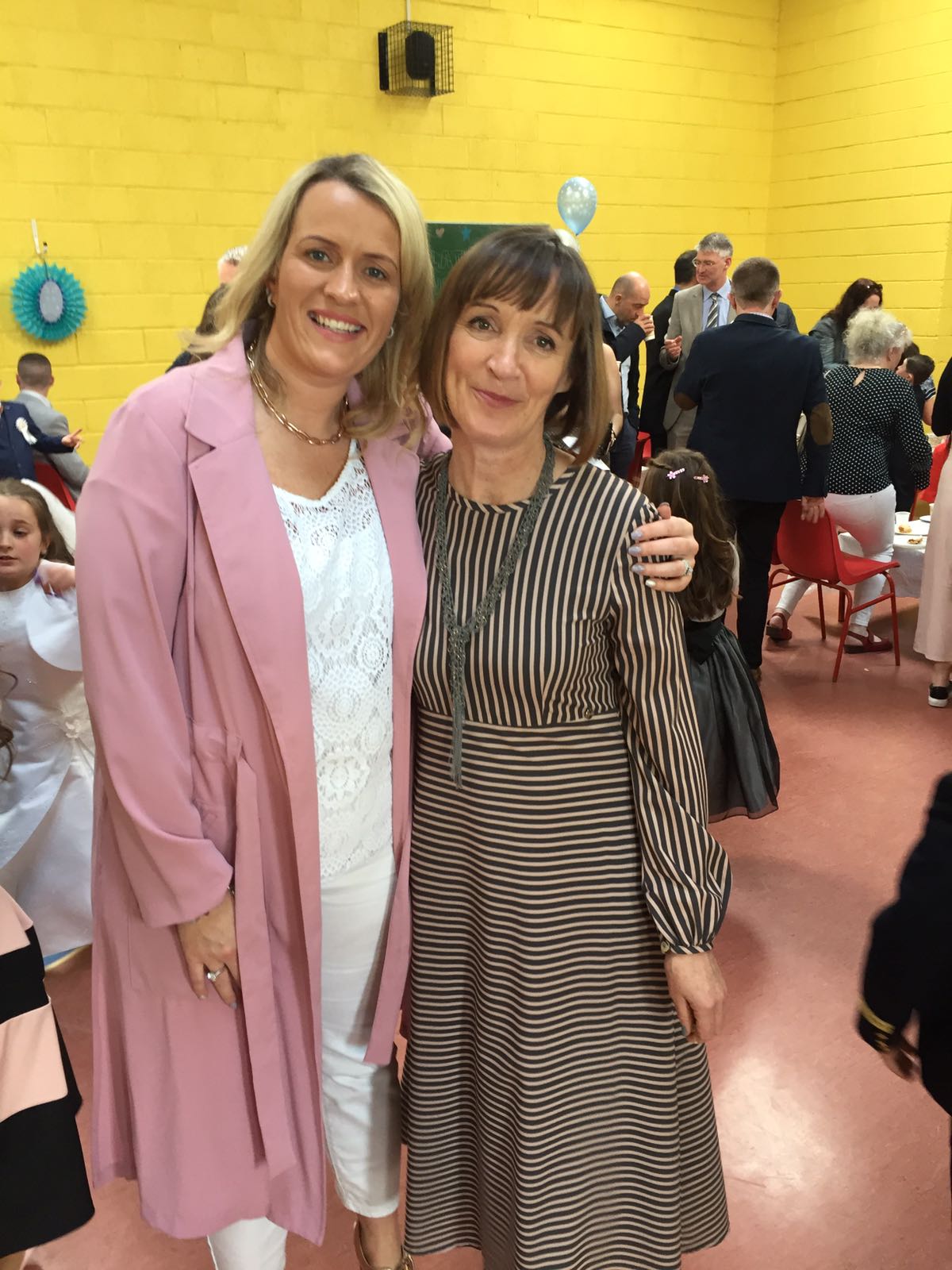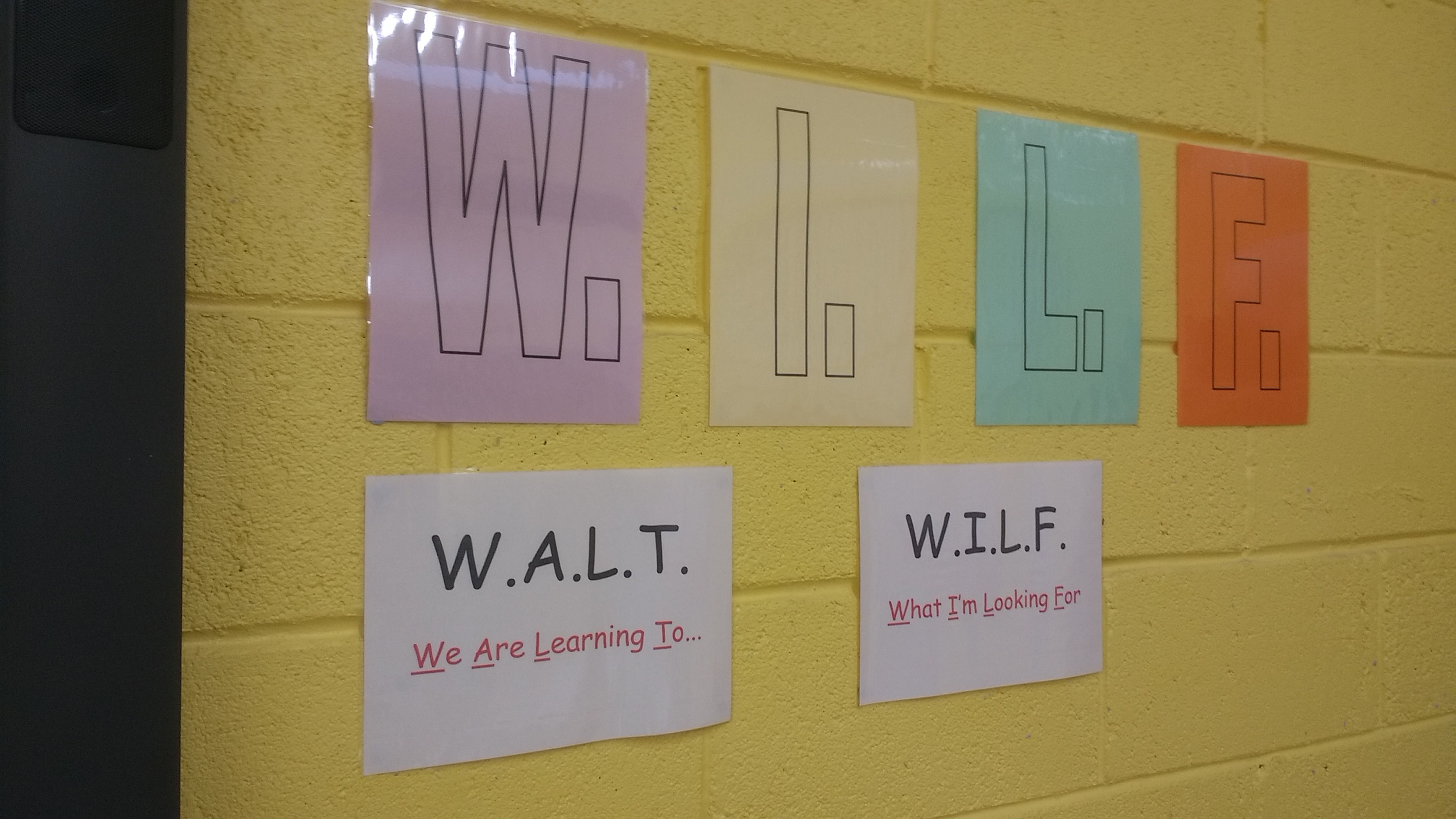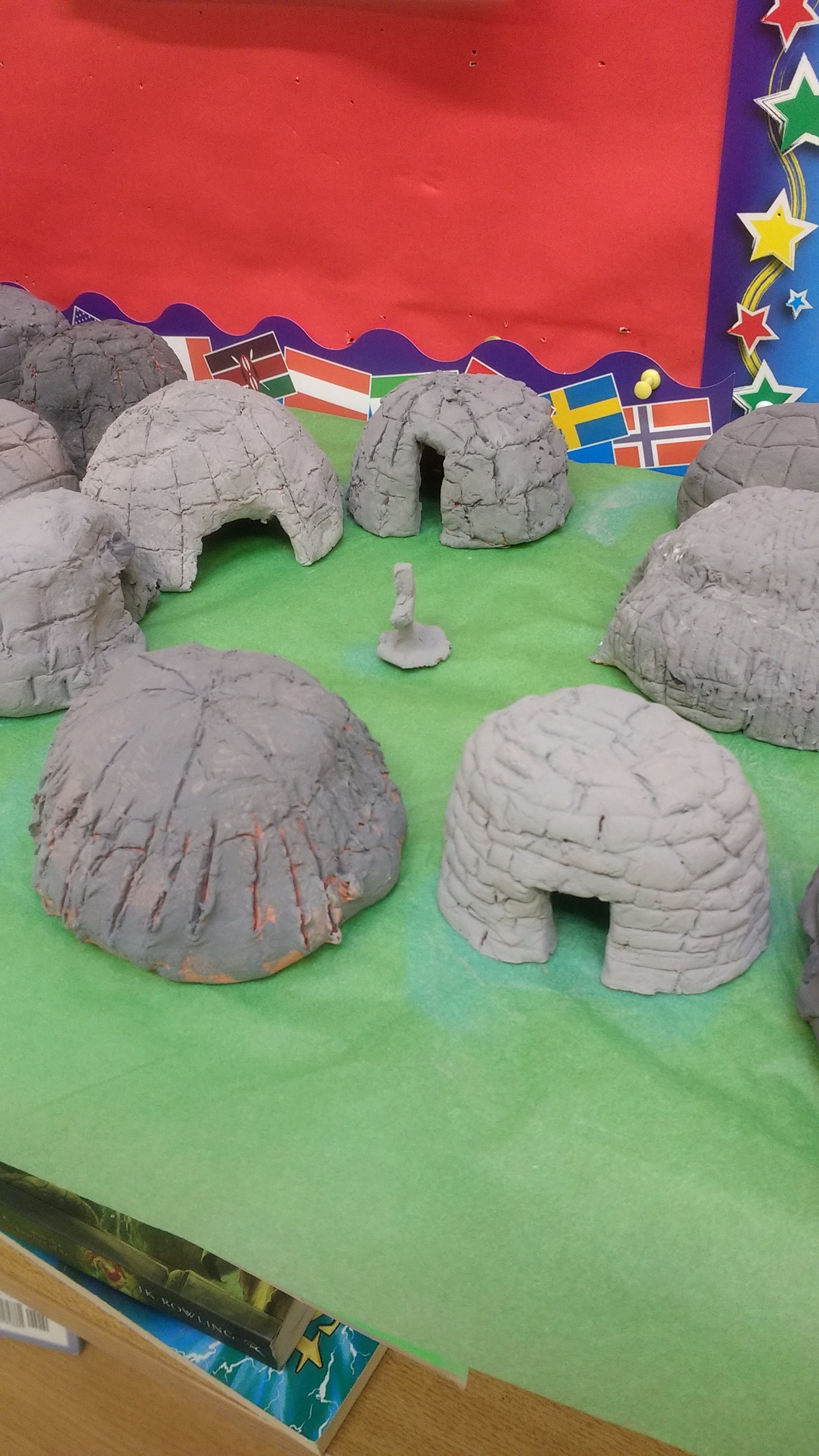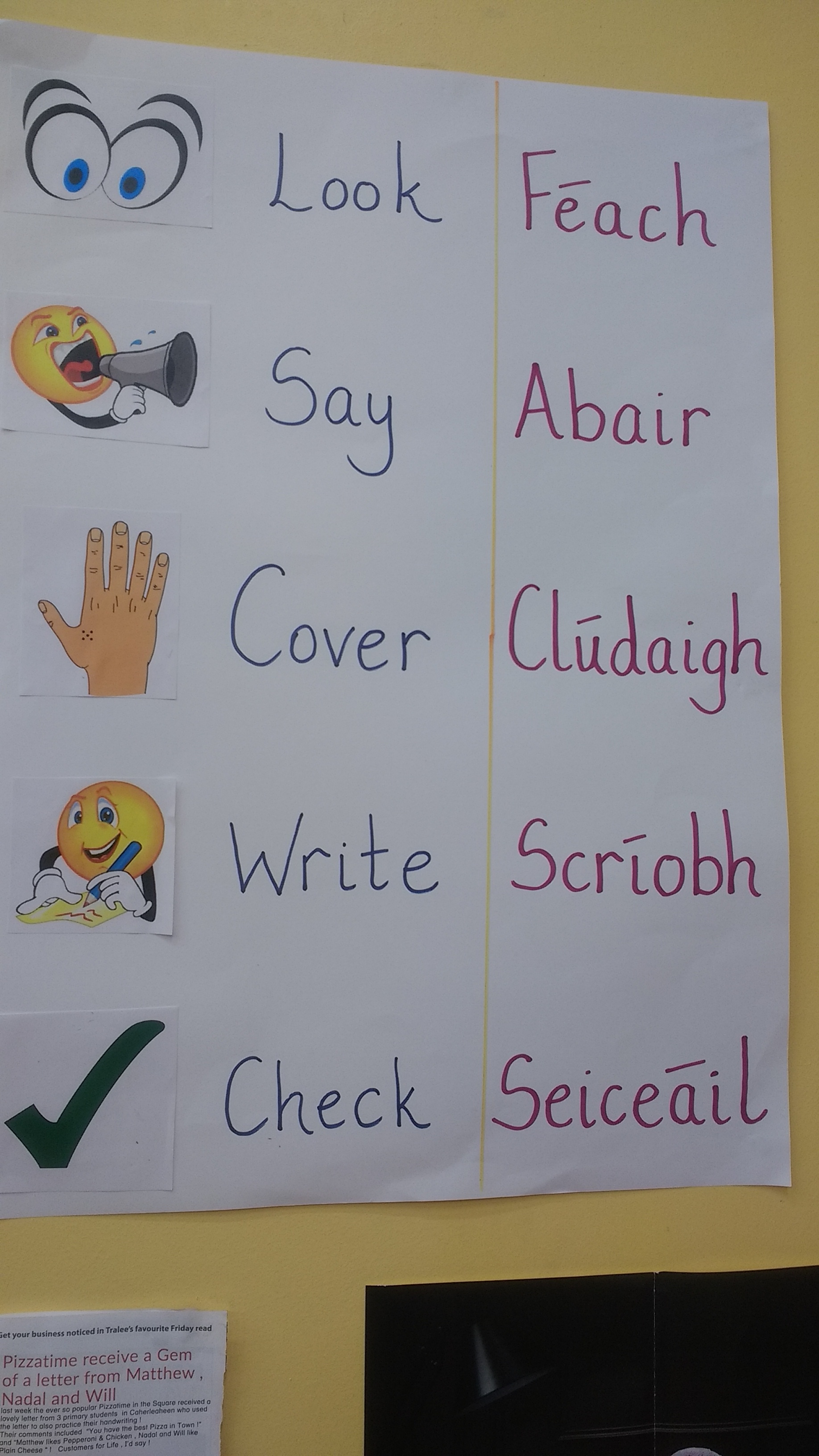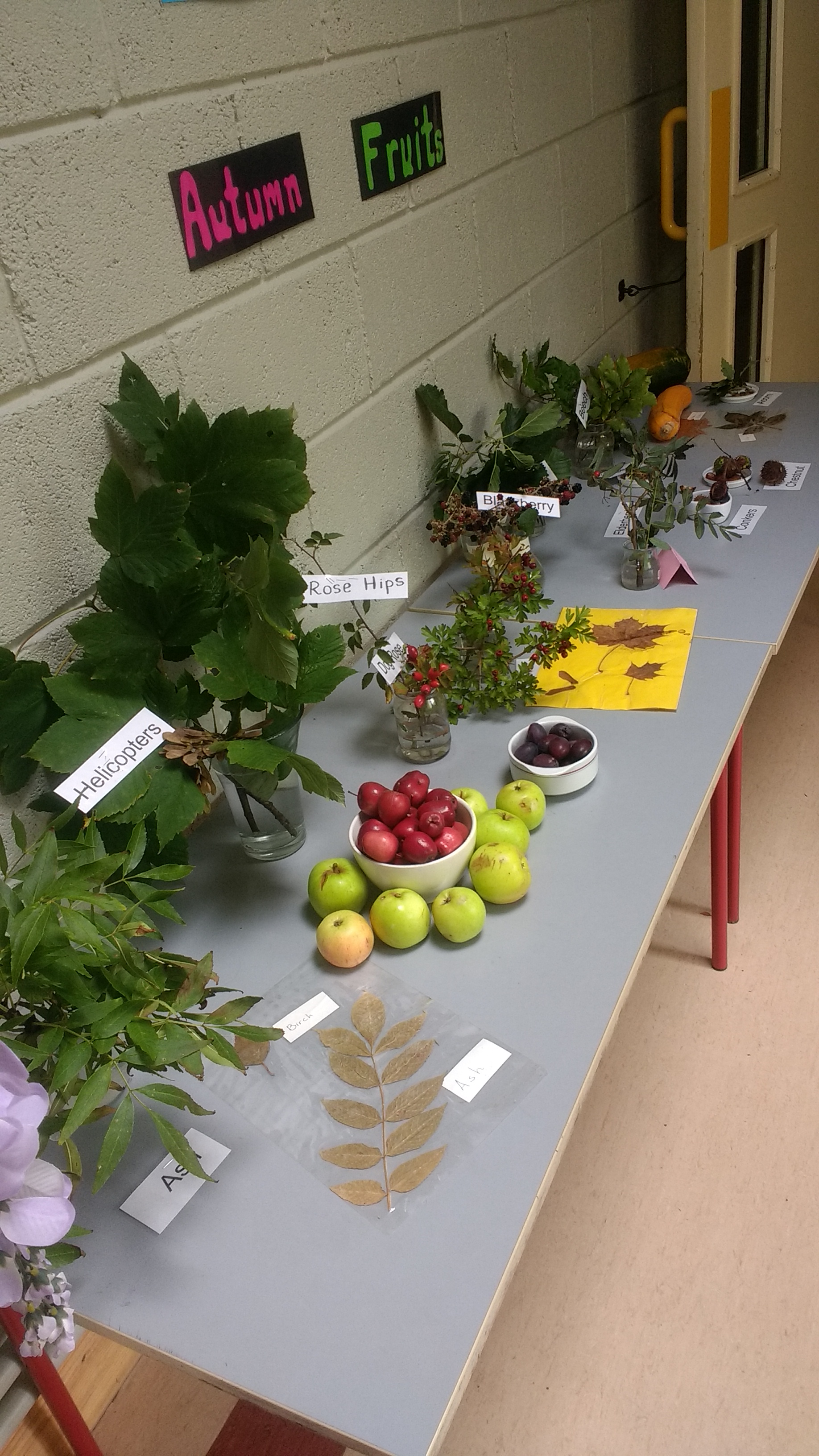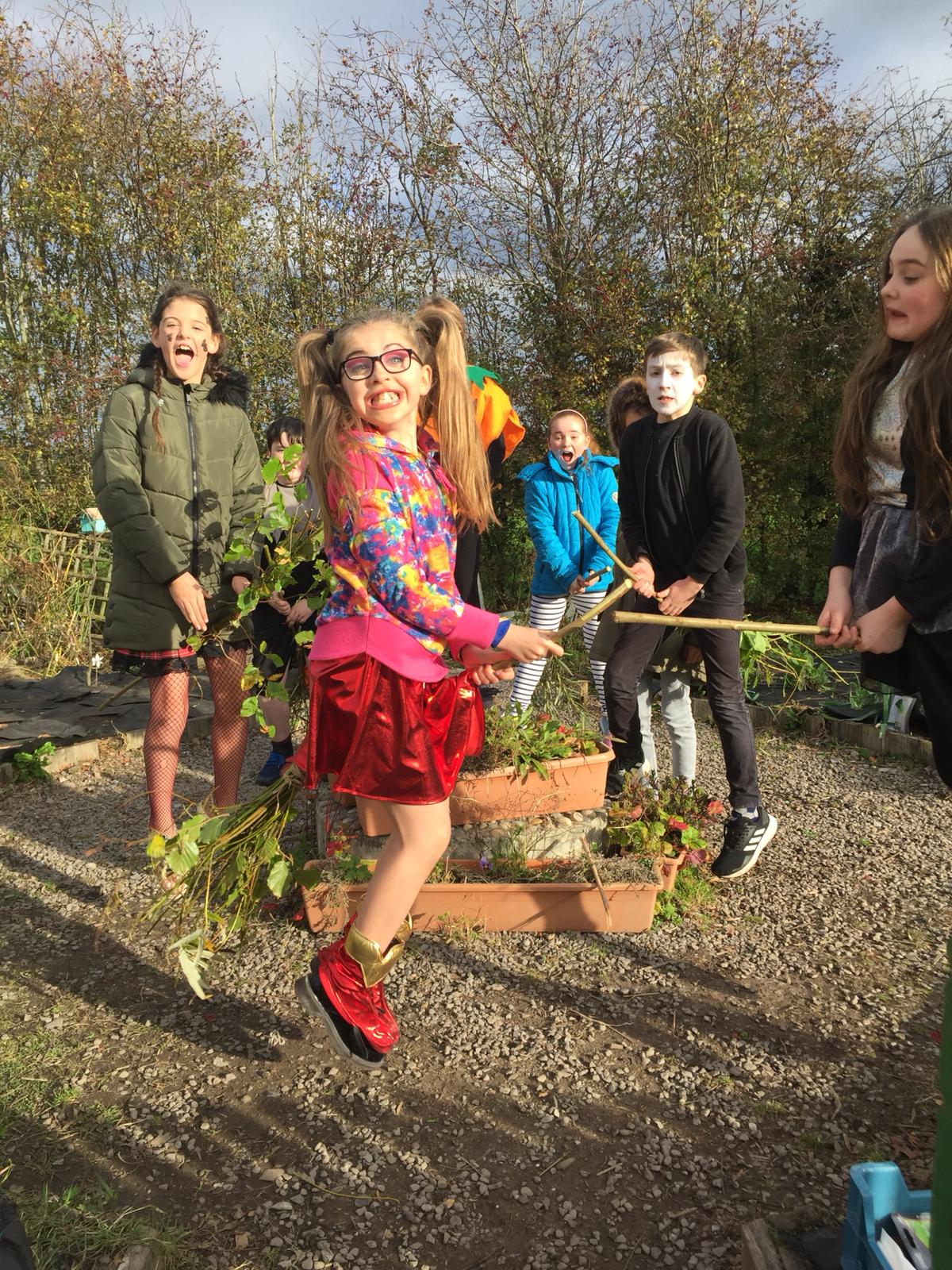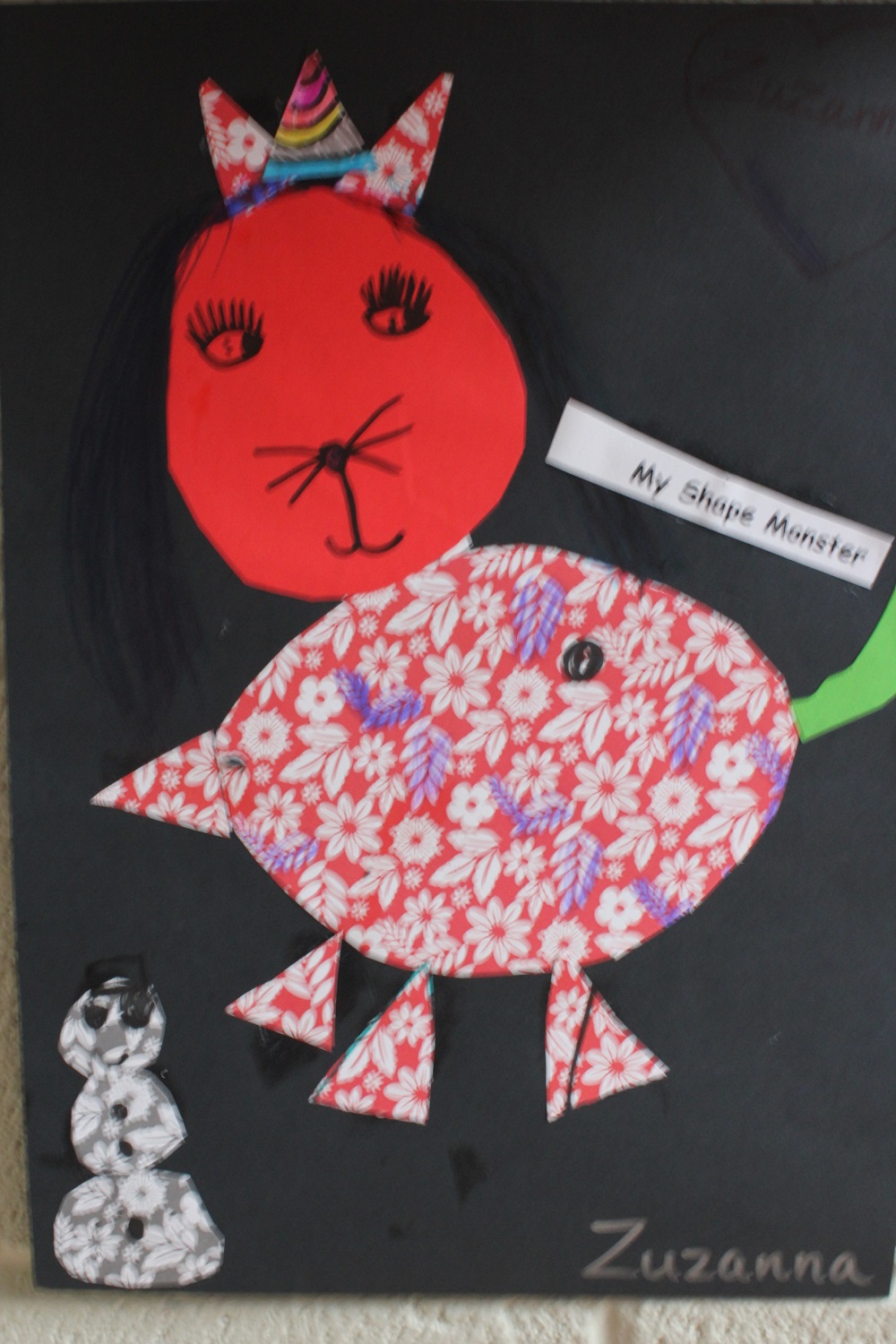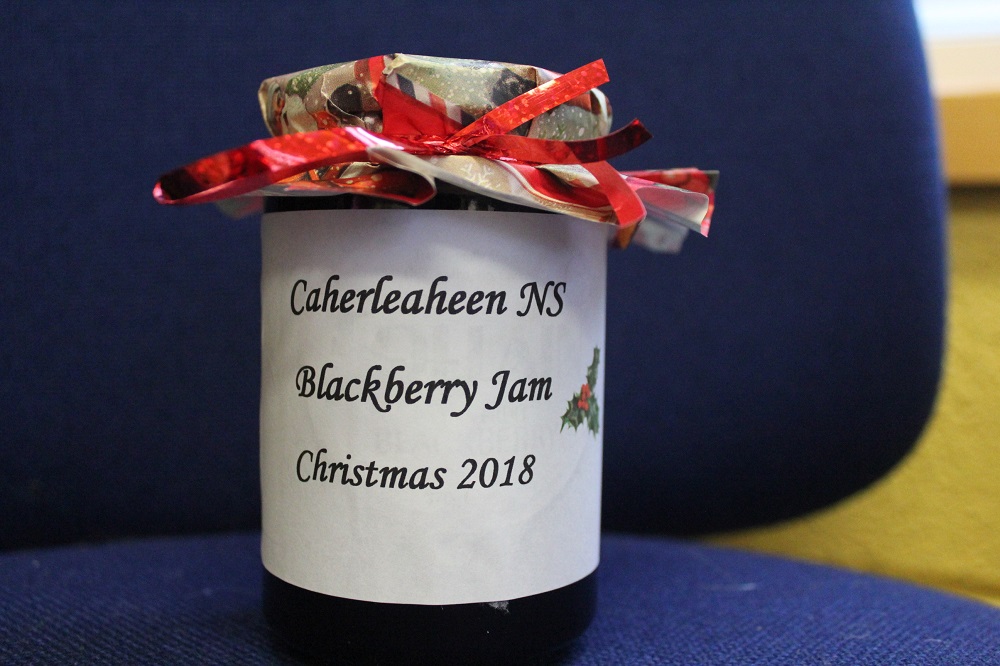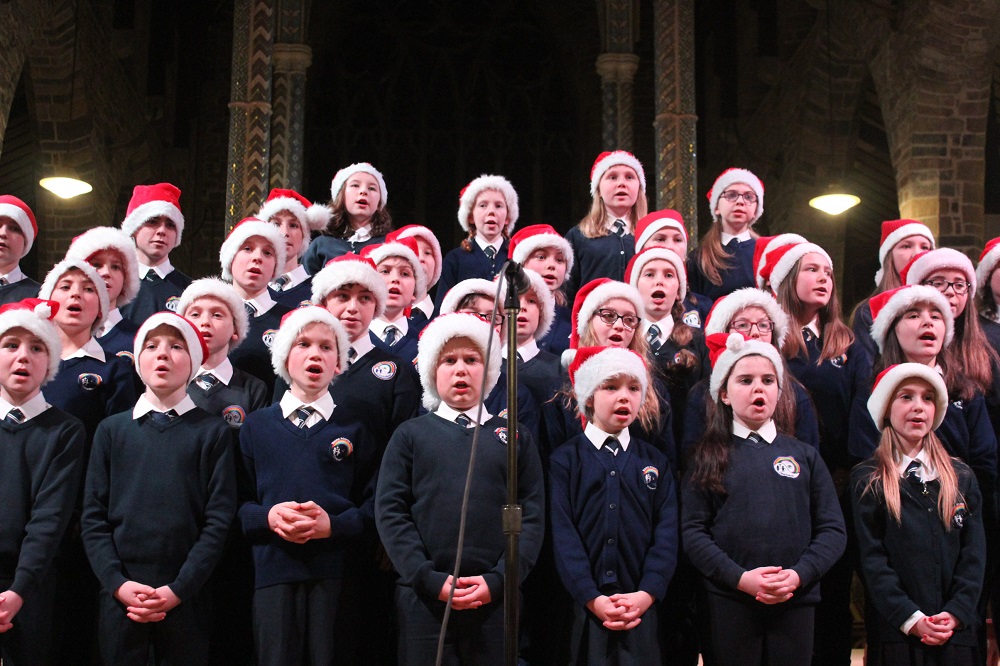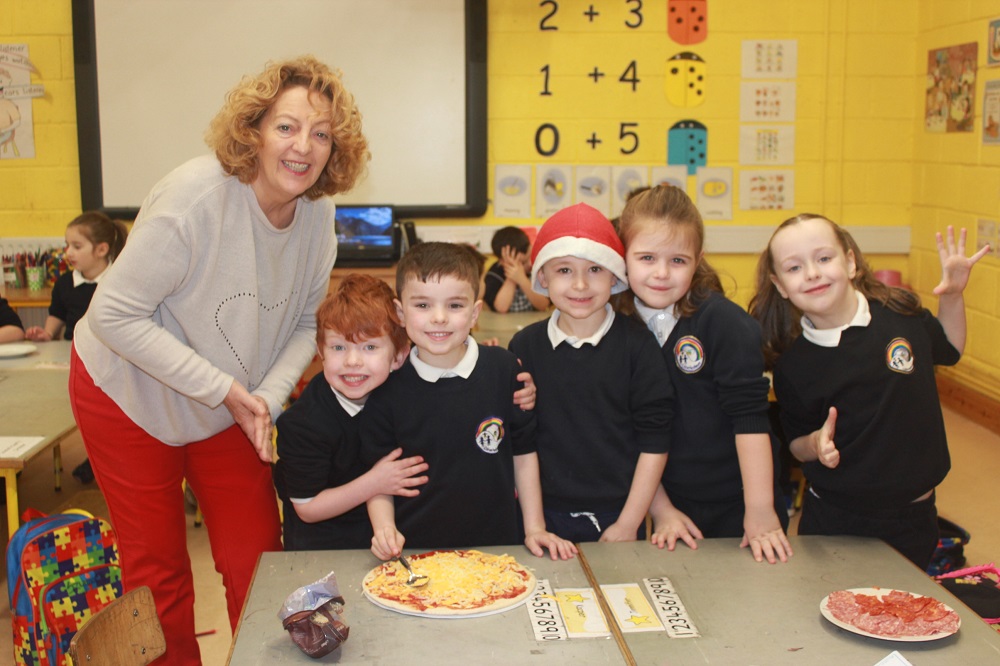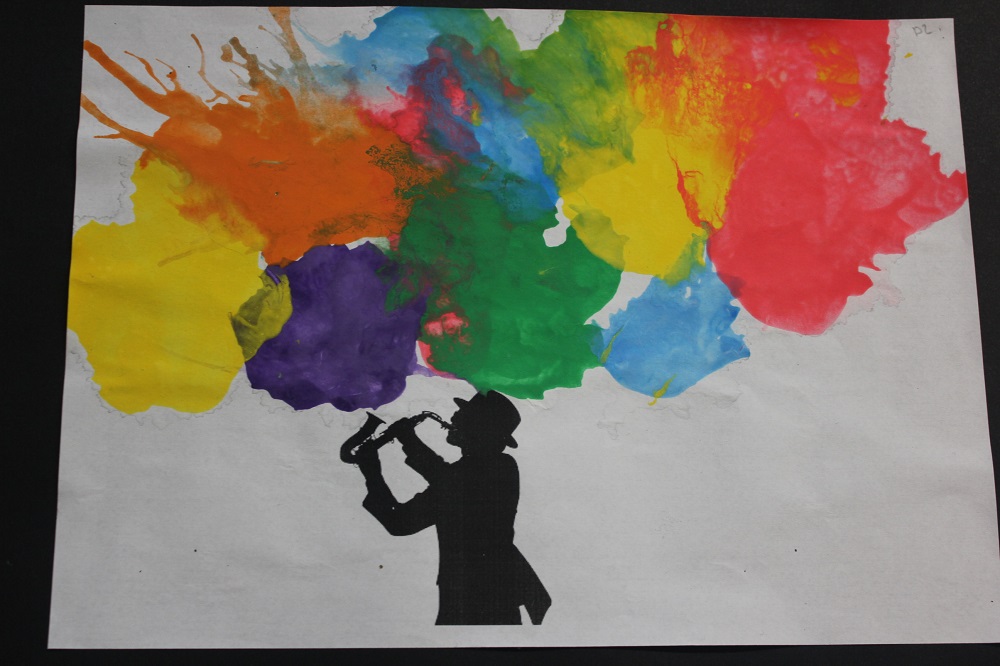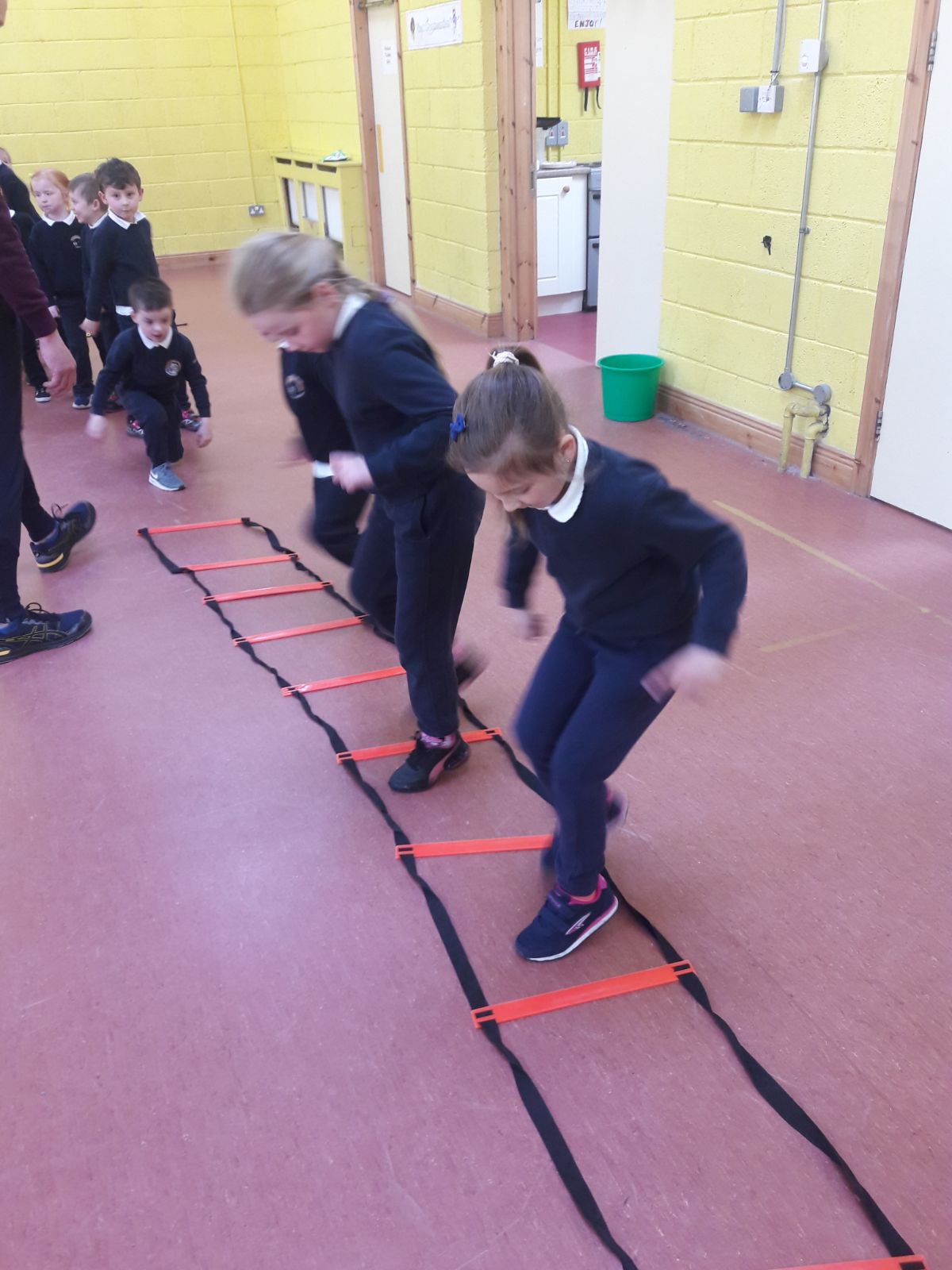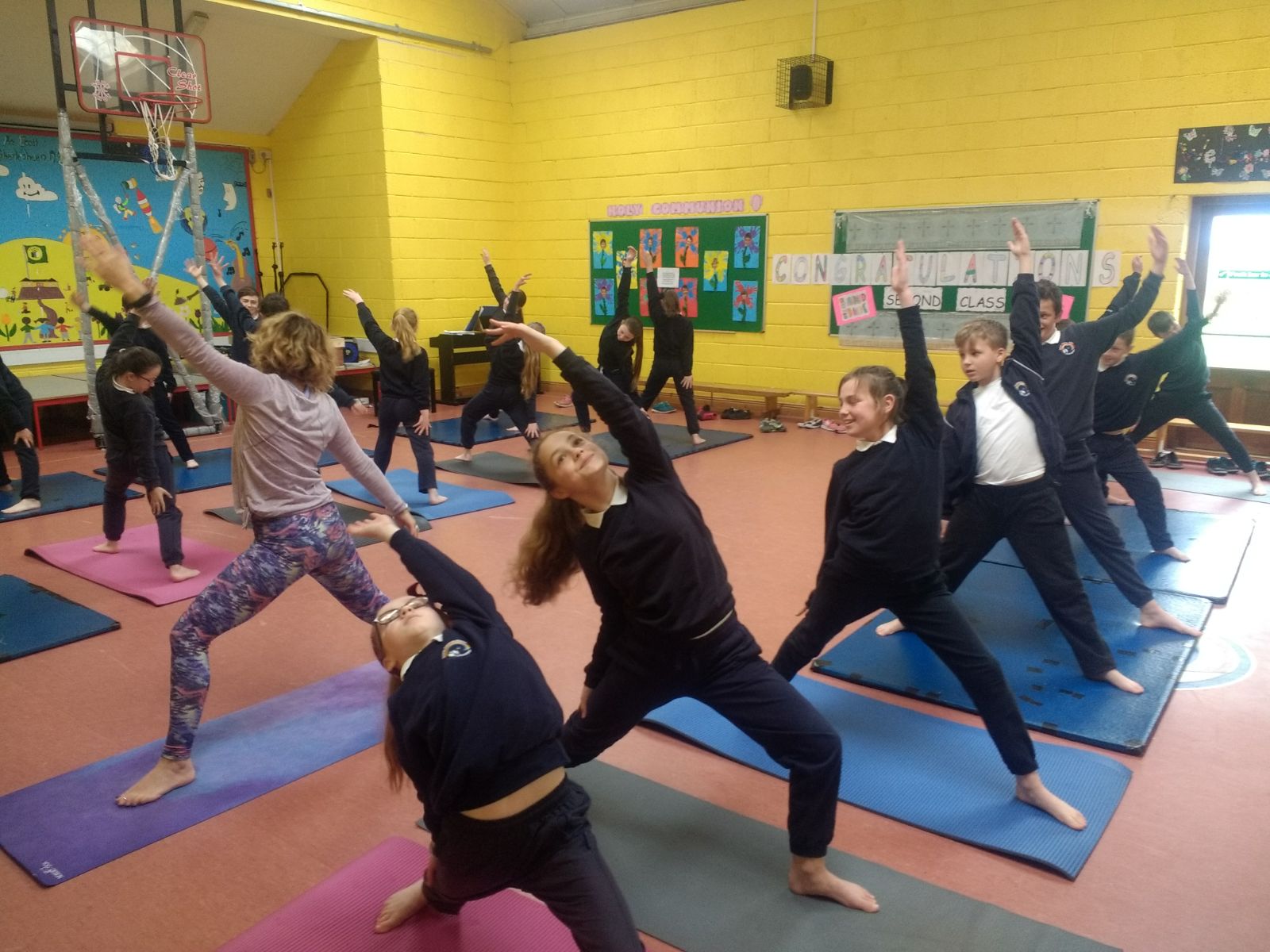Auditing the trees and plants in Caherleaheen.
Senior Inf, First and Second are enrolled in the Great Plant Hunt programme, a subset of the Green Flag. The results of their surveys are complete. Rang a Sé made a huge map of our school and grounds, painstakingly painting/drawing all the plants and landmarks.Parents and children from Sixth, Fifth, Fourth and Third classes returned their biodiversity surveys. We have been very busy!!Click this photo to start slide show!

We have more than 100 beech trees growing along our boundaries. The beech is deciduous, but holds on to its leaves throughout the winter.

Beautiful rose-hips may not be edible, but they are bursting with Vit C, which is used to make supplements.

The last of the autumn blackberries.These are a popular, delicious fruit with plenty of Vit C (edible, not like haws!)Bramble thrives in the townland of Caherleaheen.

The haws of the whitethorn, one of our native trees is associated with fairies. We have 200 fairies in Caherleaheen!!

This fern is called Hart’s Tongue. It’s frond is shaped like the tongue of the Hart deer. It grows happily in shade near our stone wall.

And no, these are not acorns. They are galls, home to the hall wasp which favours the oak as it’s host!

And here are a few Brussels sprouts …..elderly but standing proud. They wouldn’t look good or taste good on Christmas Day..
